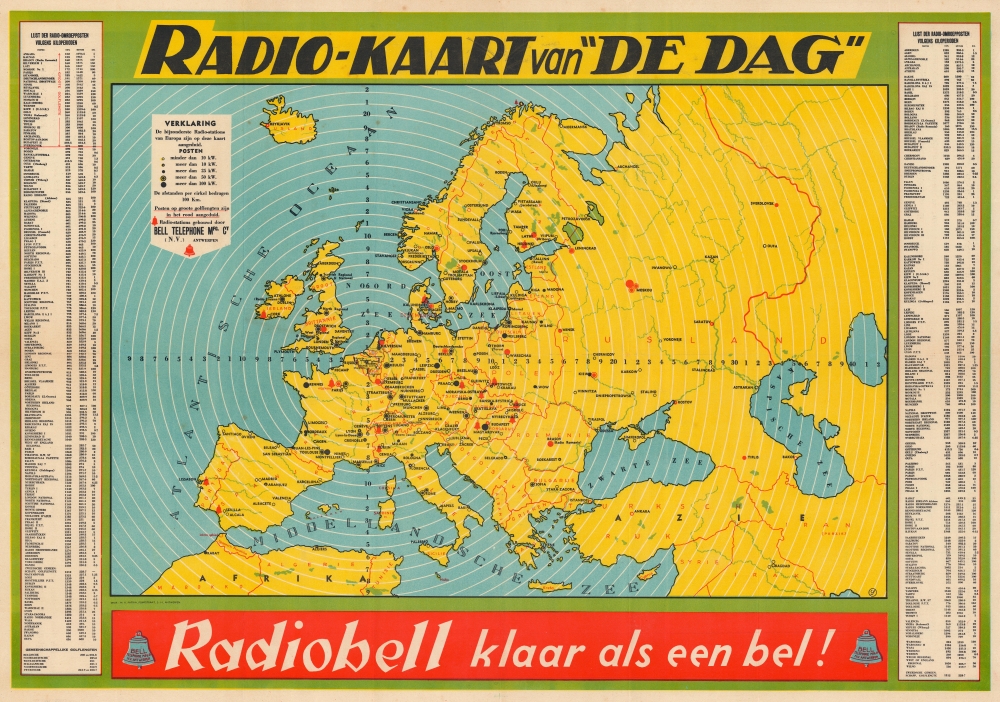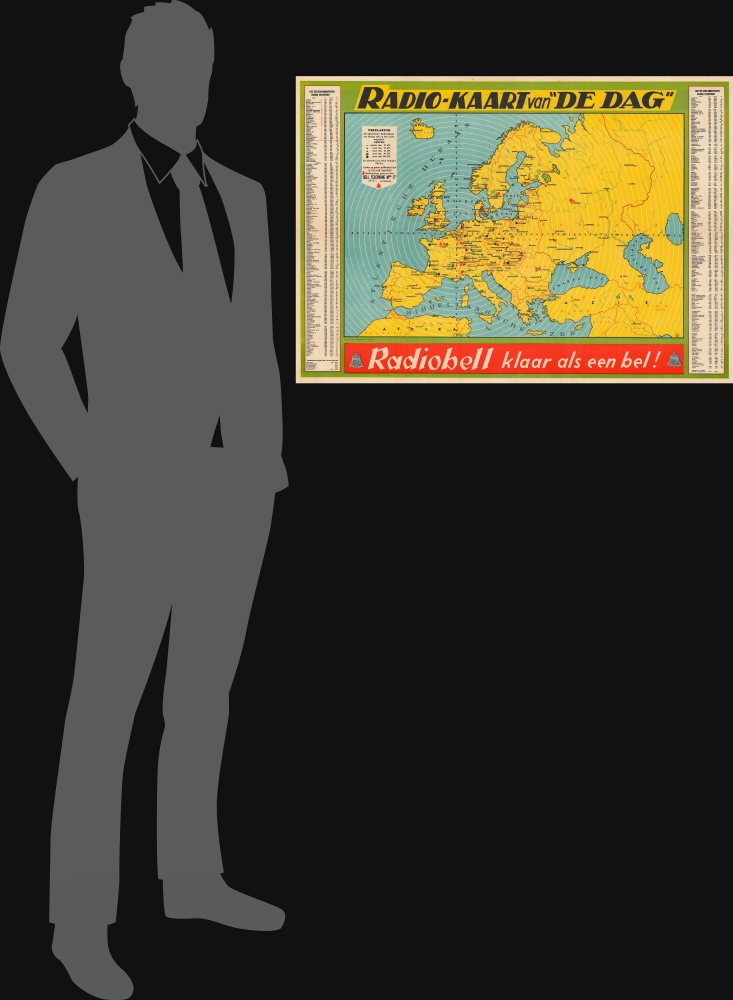1938 De Dag Radio Station Map of Europe
RadioKaart-dedag-1938$450.00

Title
Radio-Kaart van 'De Dag'.
1938 (undated) 22 x 31.5 in (55.88 x 80.01 cm) 1 : 10110000
1938 (undated) 22 x 31.5 in (55.88 x 80.01 cm) 1 : 10110000
Description
Celebrating radio during its Golden Age, this is a c. 1938 De Dag map of Europe marking major radio stations. Published on the eve of World War II, at this time in history radio not only meant entertainment for the masses, but also acted as a tool by governments to promulgate propaganda.
A Closer Look
With Brussels at the center of a series of concentric rings, radio stations throughout Europe are marked by dots, with each type of dot indicating the station's wavelength. Stations marked with red bells were built by the Bell Telephone Manufacturing Company of Antwerp. An index by wavelength appears along the left border while an alphabetical index is situated outside the right border. Bell Telephone of Antwerp's slogan Radiobell klar als een bel! is included along the bottom edge.De Dag
De Dag (November 20, 1934 - September 1944) was a Belgian tabloid inspired by American tabloid newspapers and the first of its kind in Belgium. Mark Tralbaut pitched the idea to Patria, an Antwerp-based publisher of boulevard and pin-up magazines. Patria liked the idea and began publishing De Dag in 1934. Over the course of the 1930s, several journalists joined the staff, many of whom went on to illustrious careers. De Dag reached its circulation peak in 1938, with a daily circulation of 110,000 copies. In 1938, De Dag was accused of accepting support from Nazi Germany and of including information from Nazi sources in its publications. This accusation was never proved, even in the postwar trial of De Dag. De Dag defended neutrality and supported Flemish nationalism. The magazine stopped publication after the German invasion on May 10, 1940. However, it returned on June 15, after declaring loyalty to Belgium and the king, stating in its editorial that it would remain 'popular and Flemish-minded'. By February 1941, the paper had become a mouthpiece for the occupying Germans. It slavishly followed the censorship guidelines and became fiercely anti-Bolshevik. It even recruited for the Eastern Front. After liberation, the editors tried to start a new publication called De Tijd, but Belgian courts banned its publication.Publication History and Census
This map was printed by Patria and published by the Belgian tabloid De Dag c. 1938. We note a single cataloged example in OCLC which is part of the collection at the Erfgoedbibliotheek Hendrik Conscience in Antwerp.Condition
Very good. Light wear along original fold lines. Closed margin tears professionally repaired on verso. Verso repairs to fold separations. Slight loss at a few fold intersections.
References
OCLC 902318964.




